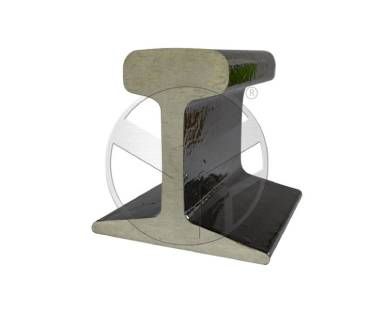Home >> News >> Latest News
We know that the rail is mainly used in some steel rail roads or some special vehicle guide rails. Its use is very important to us. Let's look at the rail knowledge explained by Steel Crane Rail Manufacturer.
Rails with a nominal weight of more than 30kg per meter. Both train rails and Crane Rails are heavy rails. Train rails: used for railway laying, to withstand the pressure, impact load and friction during train operation, sufficient strength and certain toughness are required. The quality requirements are strict. In addition to ensuring its chemical composition, it also requires inspection of mechanical properties, drop weight test and acid leaching low-power structure. Crane rail: The crane rail has a low height, a large head width and a large waist thickness, and only requires inspection of chemical composition and tensile strength. Used for laying crane tracks and trolley tracks. It is a steel rail with a nominal weight of less than or equal to 30 kg per meter. Light Steel Rail has lower quality requirements than heavy rails, and only requires inspection of its chemical composition, tensile strength, hardness, and drop weight test. Main use: Light rail is mainly used for laying temporary transport lines and light locomotive lines in forest areas, mining areas, factories and construction sites.

Light Steel Rail
We know that steel rails are mainly used on railways or some industrial occasions. Its use is very important to us. It can make the road more stable, and it will not be affected by normal rain and snow. It can be used as usual. This is mainly The rails are scratched and smooth. By laying such Rails, you can travel quickly to various places. Don't worry about the slow speed, because it is a straight line, not a straight turning line, which can make the vehicle free from complicated road restrictions. This is mainly the rail In terms of production quality requirements, only a strict requirement can make a good product. Let's look at what the rail production process includes.
Out-of-furnace refining and vacuum degassing technology are used to ensure the internal quality of the slab, control the residual elements and gas content in the steel, and ensure the purity of the steel. Continuous cast blooms are used to improve the low magnification structure of the slab. Adopting a step-type heating furnace to heat the steel billet can effectively control the atmosphere in the furnace and prevent the steel from decarburizing and uneven heating temperature during the heating process. Using high-pressure water descaling technology. It can greatly reduce the occurrence of defects such as rolling marks caused by scale. The universal method hole design and computer are used to adjust the rail geometry on-line to ensure the rolling accuracy of the rail section. Adopt long-length rolling, long-length cooling, reverse pre-bending and long-length straightening processes to improve the yield rate, reduce the pre-correction curvature and reduce the residual stress after correction, and improve the fatigue life of the rail. Using online quality inspection technology, through the ultrasonic, eddy current and laser inspection of the rails, you can fully understand the interior, surface quality and geometric dimensions of the rails. Using a saw-drilling machine with a hard alloy to perform end machining and drilling of the rail, high machining accuracy can be obtained.
Previous: The Various Components of a Rail
Next: Rail Grinding Effect

Leave a message